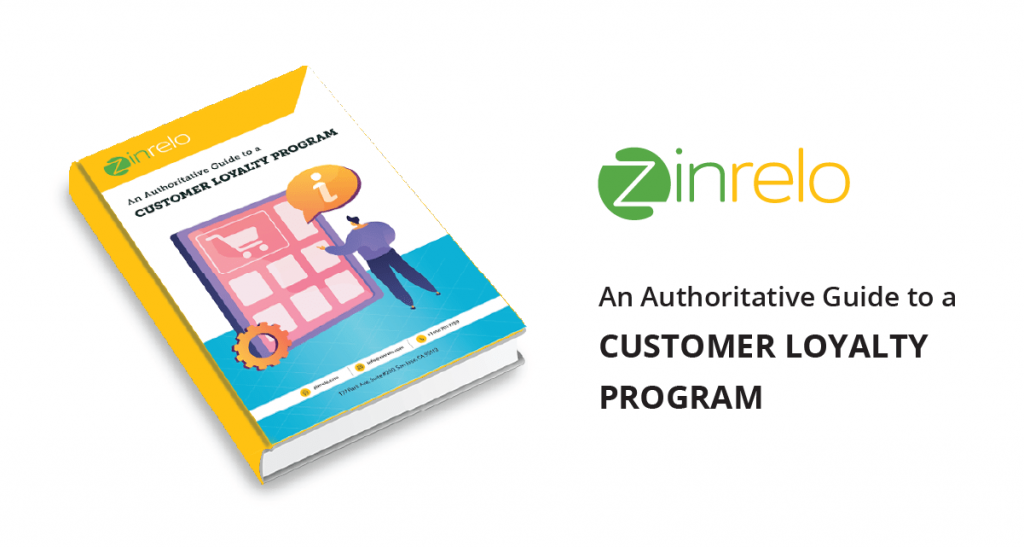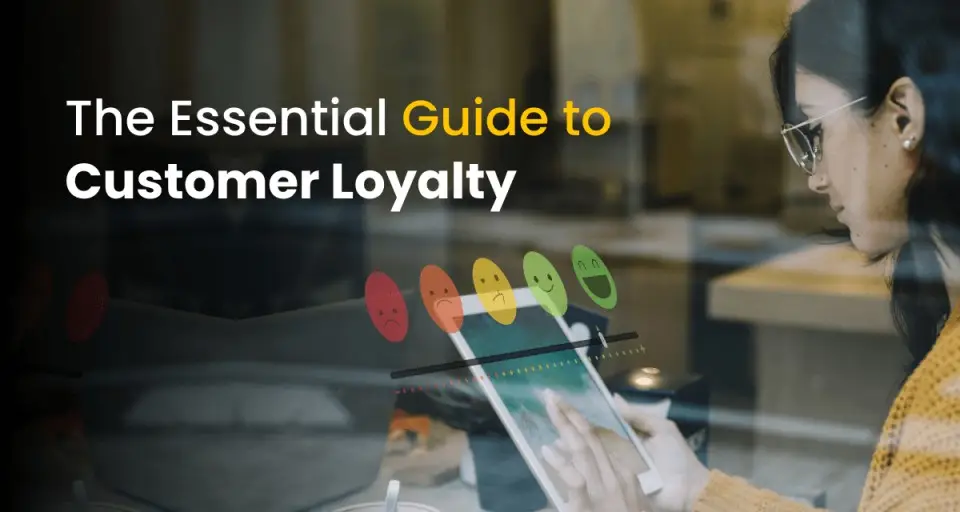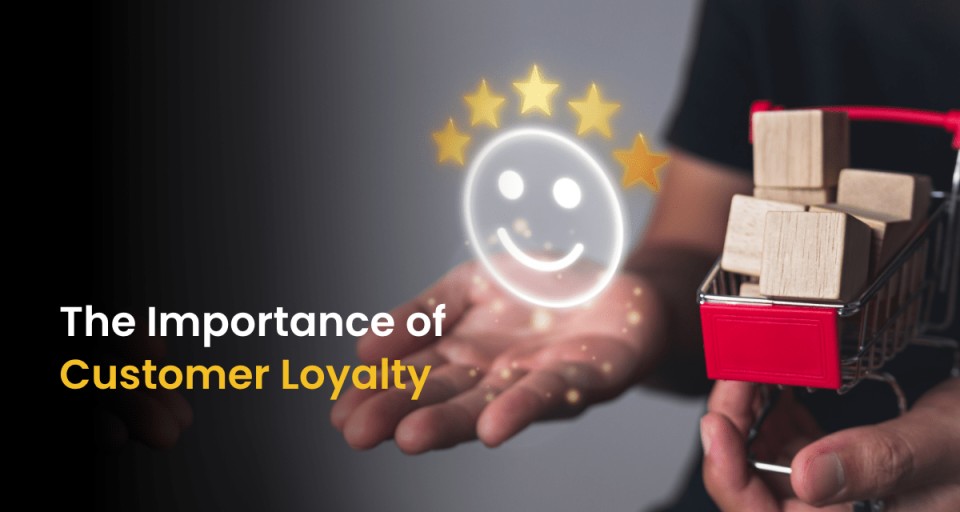Understanding how businesses can build trust and long-term relationships with their customers has become a necessity in today’s competitive market. Businesses face difficult competition, and understanding and maintaining customer loyalty is now key to business success. This article aims to create a detailed exploration of customer loyalty. It explains the concept clearly and provides practical strategies for building and sustaining loyalty among customers.
The guide is specifically tailored for businesses looking to build and deepen their understanding of customer loyalty and its role in achieving long-term success. It covers everything you need to know about customer loyalty including the definition, the importance of loyal customers, and examples, and offers innovative ways to engage and retain them effectively.
Essential Guide to Build Customer Loyalty:
- Introduction to Customer Loyalty
- Understanding Customer Loyalty
- The Importance of Customer Loyalty
- How to Build, Increase, and Maintain Customer Loyalty
- Customer Loyalty Strategies and Techniques
- Building Customer Loyalty Examples
- Innovative Approaches and Practical Insights for Customer Loyalty
- Conclusion
Introduction to Customer Loyalty
If you look at the current business growth landscape, customer loyalty is more than just getting repeat sales; it’s a key driver for business growth. It doesn’t only boost sales but also strengthens brand image and support. A study by Bain & Company shows that even a small 5% rise in keeping customers can lead to a 25% to 95% increase in profits. This article is carefully curated and designed to simplify the complex topic of customer loyalty. It provides businesses with a thorough set of tools and deep insights to effectively use the powerful impact of customer loyalty.
Understanding Customer Loyalty
The idea of customer loyalty is deeply rooted in how customers feel and behave when they interact with a business. Customer loyalty solves an important question for businesses and that is how likely a customer is going to repeat a purchase or recommend the brand to their friends.
Let’s start with understanding what exactly is customer loyalty.
A. What is Customer Loyalty?
Customer loyalty is the combination of emotional attachment and consistent behavior. It shows a customer’s strong preference for a brand, going beyond just buying things. This loyalty grows over time through trust, satisfaction, and seeing the brand as valuable.
B. The Loyal Customer and Who Are They?
In simple words, a loyal customer is someone who consistently chooses and remains devoted to a particular product, brand, or service over time. Loyal customers are vital to a brand’s success. They do more than just buy regularly; they actively support and promote the brand. These customers are different from casual buyers. They are less bothered by price changes and stay loyal even with better deals elsewhere. Their dedication to a brand is strong, often overlooking small issues or service problems, showing the depth of their loyalty.
C. Customer Loyalty in Marketing
Businesses need to recognize that customer loyalty, especially in our modern, technology-filled world, is far more significant than a simple statistic; it’s a crucial business strategy. In the bigger picture, customer loyalty in marketing serves as a branding tool. This business strategy requires the careful creation and sharing of experiences and stories that truly engage customers. The goal is to provide compelling reasons for customers to continually choose your brand over numerous other options.

The concept of customer loyalty is not just a modern business strategy but has historical roots dating back centuries. In ancient markets and medieval guilds, merchants heavily relied on loyal customers for their livelihood. These customers would consistently return to the same craftsmen or traders, often based on personal relationships and trust built over the years. In return, these merchants would sometimes offer special deals or privileges, a practice that can be seen as an early form of today’s loyalty programs.
The Importance of Customer Loyalty
Customer loyalty goes beyond just revenue, turning customers into loyal advocates. This support not only ensures steady profits but also shields a business from market changes, building a strong reputation. Essentially, customer loyalty forms the bedrock for lasting connections that withstand market shifts.
Why Loyalty in Business Matters?
1. A Reliable Source in Changing Markets
Having loyal customers helps businesses stay stable, even when the market is unpredictable. These customers keep buying, which means a steady income for the business, even in tough times.
2. Lower Costs for Gaining Customers
It’s usually harder and more expensive for businesses to get new customers than to look after the ones they already have. A study from Harvard Business Review shows that getting a new customer can be up to five times more expensive than keeping an existing one. Loyal customers help reduce these costs because keeping them happy is cheaper.
3. Increased Profit
Over time, a loyal customer helps businesses increase their customer retention. As repeat purchasers, loyal customers often buy more. As they grow more attached to a brand, they’re likely to spend more, which means more profit for the business.
4. Better Marketing Efficiency
Because of the brand attachment, marketing to loyal customers is easier and less costly. They don’t need as much convincing and are more open to marketing messages. This means businesses can spend less on big marketing campaigns.
5. Valuable Feedback for Improvement
Loyal customers are more likely to give useful feedback. This is important for businesses to keep improving and stay ahead in the market.
Customer Loyalty Meaning and Impact
- Growing Market Share: Loyal customers help a business grow its market share. Their regular purchases and recommendations bring in new customers, which increases the company’s presence in the market.
- Improving Brand Reputation: When loyal customers share their positive experiences, they act as promoters of the brand. This makes the brand more trustworthy and attractive to potential customers.
- Higher Value from Customers Over Time: Loyal customers are more valuable in the long run. They buy more often and tend to choose more expensive products or services, adding more to the business’s earnings.
- Stronger Against Competitors: Having loyal customers gives a business an edge over competitors. These customers are less likely to switch to other brands, providing a layer of security in a competitive environment.
- Key to Long-Term Success: The overall impact of loyal customers on a business’s revenue, market share, and reputation is huge. They play a crucial role in ensuring the business thrives and lasts over time.
How to Build, Increase, and Maintain Customer Loyalty
Creating strong emotional connections with customers is the foundation, ensuring that their experiences go beyond transactions. By consistently delivering value and exceeding expectations, businesses enhance loyalty, turning satisfied customers into long-term advocates.
How to Build Customer Loyalty
Step#1 Understanding and Meeting Customer Needs
The foundation of customer loyalty lies in deeply understanding and consistently meeting customer needs. This involves not only responding to their current requirements but also anticipating future needs.
Step #2 Personalizing Customer Experiences
Personalization in loyalty programs and your marketing efforts is key to building loyalty. Tailoring experiences to individual customer preferences and histories can significantly enhance customer satisfaction and loyalty.
Step #3 Delivering Exceptional Service
Exceptional customer service is a critical component of loyalty. This means going beyond what’s expected to surprise and delight customers, creating memorable experiences that encourage repeat business.
Step #4 Creating a Unique Value Proposition
What makes your brand stand out in the competitive market is an important pillar in creating connections with the target audience. This could be through innovative products, exceptional service, or a unique brand story.
How to Increase and Improve Customer Loyalty
- Elevating Customer Experience: The customer experience encompasses every interaction a customer has with your brand. By elevating this experience – making it smoother, more enjoyable, and hassle-free – businesses can significantly increase customer loyalty.
- Providing Added Value: Customers remain loyal to brands that consistently offer them value. This value can come in various forms – from high-quality products to exclusive deals and discounts. Providing educational content, engaging in community initiatives, or offering loyalty rewards are effective ways to add value.
- Maintaining Consistent Engagement: Regular engagement keeps your brand at the forefront of customers’ minds. This can be achieved through effective email marketing, active social media presence, or regular updates about new products and services. The key is to keep the communication relevant and valuable to the customer.
- Acting on Customer Feedback: Customer feedback is a goldmine of insights. Actively seeking and promptly acting on this feedback demonstrates a commitment to meeting customer needs and expectations, which in turn improves loyalty.
- Personalized Interactions: Personalization has become a necessity for businesses. Tailoring interactions based on customer preferences and purchase history can make customers feel valued and understood, thereby enhancing loyalty.
- Innovating Loyalty Initiatives: The market is always evolving, and so are customer expectations. Continuously innovating your loyalty initiatives to align with current trends and customer preferences is essential. This could mean revamping your customer loyalty program or introducing new, innovative ways for customers to engage with your brand.
How to Maintain Customer Loyalty
- Regularly Updating Loyalty Programs: Revamping your loyalty program is a continuous process. Regular updates, based on customer feedback and market trends, can keep these programs fresh and relevant, encouraging ongoing participation from customers.
- Being Receptive to Customer Needs: Customer needs and preferences can change over time. Staying attuned to these changes, and adjusting your offerings and strategies accordingly, is crucial in maintaining loyalty.
- Adapting to Market Shifts: The market shifts are unpredictable. Being agile and adaptable to these shifts, whether they are technological advancements, changes in consumer behavior, or new competitive strategies, is essential for sustaining customer loyalty.
Customer Loyalty Strategies and Techniques
1. Build a Loyalty Program
Implementing loyalty programs that reward repeat business can significantly enhance customer retention. For example, Starbucks’ loyalty program has been a major factor in increasing customer spending and frequency of visits.
2. Utilize Customer Feedback
Actively seeking and acting on customer feedback demonstrates a commitment to continuous improvement and customer satisfaction, fostering a sense of loyalty.
3. Personalize Marketing Efforts
Leveraging data analytics for personalized marketing efforts can create more relevant and engaging customer experiences, enhancing loyalty.
4. Build a Community
Creating a sense of community around a brand can foster a deeper emotional connection with customers. This can be achieved through events, forums, or social media engagement.
5. Engagement on Social Media
In 2024, building customer loyalty through social media has become an essential part of the marketing strategy. Using social media platforms to create direct engagement with customers can build stronger relationships. This includes responding to queries, sharing relevant content, and creating interactive platforms for customer engagement.
The Only Loyalty Program Guide You Will Ever Need!
Dive into Zinrelo’s in-depth free customer loyalty program guide to learn everything you need before building a modern-day loyalty program for your business.

Building Customer Loyalty Examples
Example #1 Sephora’s Beauty Insider Program
Sephora, a top name in beauty retail, created the Sephora Beauty Insider loyalty program. This program is a great example of how to use personalized rewards and special benefits to build customer loyalty. Customers earn points with each purchase, which they can use for products, experiences, and even custom makeovers. The program has levels, with higher levels offering better perks. This strategy has increased customer spending and strengthened their connection with the brand.
Example #2 Apple’s Ecosystem Approach
Apple has built a loyal customer base through its ecosystem. All its products and services, like iCloud, Apple Music, and the App Store, work together seamlessly. This convenience encourages customers who buy one Apple product to continue using Apple for their other tech needs, boosting loyalty.
Example #3 Zappos’ Customer Service
Zappos, an online retailer of shoes and clothing, is known for exceptional customer service, a key to its customer loyalty. Standout features include a 365-day return policy and free shipping both ways. What’s impressive is how their customer service team goes above and beyond for customer satisfaction. This focus on service has earned Zappos a loyal customer base that values not just the products, but the customer-first approach.
Innovative Approaches and Practical Insights for Customer Loyalty
Discovering new and practical methods is crucial for developing customer loyalty. Using creative strategies and a thorough knowledge of what customers want can help businesses create strong, lasting relationships with them. Next, we’ll look into ways to improve customer loyalty by being innovative and using practical knowledge.
Creating and Growing Customer Loyalty Through Innovation
A. Using AI for Custom Recommendations
Artificial Intelligence (AI) has changed how businesses connect with their customers. By using AI for custom recommendations, companies can offer experiences that are very specific to each customer, helping to build stronger loyalty.
B. Making Loyalty Programs More Like Games
Adding elements of games to loyalty programs can make customers more involved and happy. This can be done by giving points for certain actions, having different levels to reach, or giving rewards for completing challenges.
C. Showing Social Responsibility
Nowadays, customers often prefer socially responsible brands. Sustainability in loyalty programs is proven to be a great cause in creating a community. Adding these values to your brand and actions can create a stronger emotional bond with customers. This could include supporting social causes, using sustainable practices, or helping the community.
Practical Insights to Boost Customer Loyalty
A. Providing Special Benefits
Businesses can thank loyal customers by giving them special benefits. Some examples are early access to new products, exclusive discounts, or content just for members.
B. Celebrating Customer Milestones
Acknowledging important events for customers, like anniversaries or big purchases, can make them feel important and more loyal to the brand.
C. Engaging Directly on Social Media
Companies can use social media to talk to customers. Regularly interacting, answering questions, and posting relevant content can keep the brand in touch with its audience.
What Makes Customers Loyal to a Brand?
A. Product Quality
High-quality products that meet or exceed customer expectations are fundamental to building loyalty.
B. Exceptional Customer Service
Providing outstanding customer service, especially in addressing issues and resolving problems, can turn a dissatisfied customer into a loyal advocate.
C. Brand Value Alignment
Customers are more likely to remain loyal to brands whose values align with their own. This includes ethical business practices, commitment to quality, and social responsibility.
D. Emotional Connection
Building an emotional connection with customers can lead to deeper loyalty. This involves creating a brand story that resonates with customers, engaging in meaningful interactions, and consistently delivering a positive brand experience.
Conclusion
Customer loyalty goes beyond just being a number to track. It’s an ongoing and changing relationship that needs to be carefully looked after and valued. Jeff Bezos compared customers to invited guests at a party, with the business as the host. This view is very important in today’s market, where keeping customers loyal can be both a challenge and a great chance. By getting to know, creating, and keeping customer loyalty, businesses can find paths to lasting success and growth. They can move through the complicated world of today’s business with quick thinking and a clear vision for the future.
Key Takeaways and Action Items
Enhancing customer loyalty is crucial for long-term business success. Key strategies include understanding customer needs, personalizing experiences, providing exceptional service, developing innovative loyalty programs, engaging effectively, and adapting to market changes. These approaches aim to transform customers into brand advocates, underscoring the importance of customer loyalty.
- Deep Customer Understanding: Focus on deeply understanding and anticipating customer needs to build loyalty.
- Personalized Customer Experiences: Tailor experiences to individual preferences, enhancing satisfaction and loyalty.
- Exceptional Service Delivery: Go beyond expectations in customer service to create memorable and positive experiences.
- Value Proposition and Innovation: Develop a unique value proposition and continuously innovate loyalty initiatives to stay competitive.
- Engagement and Feedback Utilization: Maintain consistent engagement with customers and actively use their feedback for improvements.
- Adaptability to Market Changes: Stay agile and adaptable to market shifts and evolving customer preferences.
Ready to Build a Customer Loyalty Program?
Learn how Zinrelo’s holistic loyalty software can transform your business.




